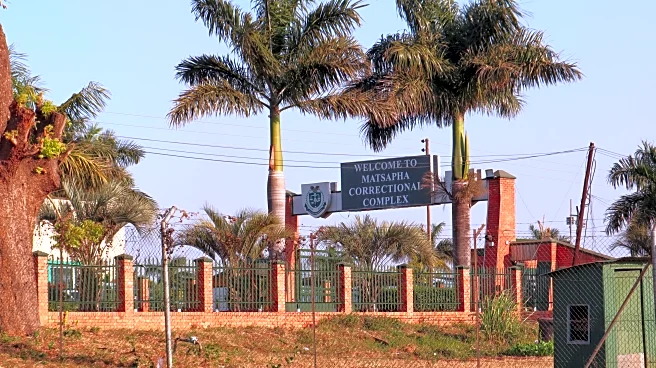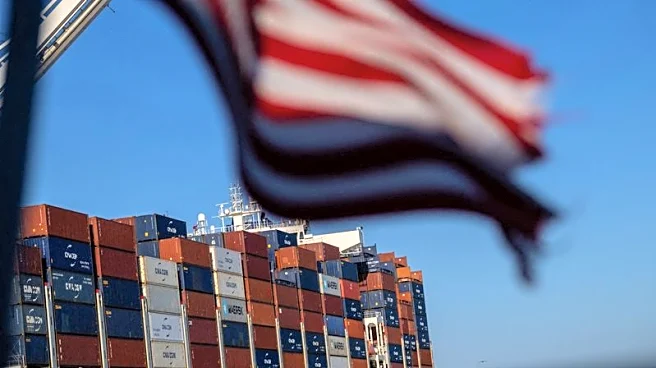What's Happening?
South Africa, a leading global producer of platinum and chromium, is facing persistent structural challenges in its mining sector, including high electricity costs, labor inefficiencies, and logistical
constraints. In response, the South African Government has introduced measures to promote domestic beneficiation and revive ferrochrome smelting. These efforts are expected to support a 3.9% increase in chromium production in 2025. Despite these challenges, South Africa remains a mining powerhouse, producing 71.5% of global platinum and 42.7% of chromium in 2024. The region's platinum production is expected to decline by 6.4% in 2025 due to heavy rains and ongoing operational challenges. However, the platinum industry is projected to grow at a CAGR of 1.4% over the forecast period (2025-2030).
Why It's Important?
The policy reforms in South Africa's mining sector are crucial for sustaining its position as a global leader in mineral production. By addressing structural issues, the government aims to enhance the sector's efficiency and competitiveness, which is vital for economic growth and job creation. The increase in chromium production and the projected growth in the platinum industry could bolster South Africa's export revenues and strengthen its economic resilience. However, the decline in platinum production highlights the need for continued investment and innovation to overcome environmental and operational challenges.
What's Next?
The South African Government's efforts to promote domestic beneficiation and revive ferrochrome smelting are expected to yield positive results in the coming years. As the sector adapts to these reforms, stakeholders, including mining companies and labor unions, will likely play a significant role in shaping the industry's future. The government may continue to implement additional measures to address infrastructure gaps and policy uncertainty, ensuring sustainable growth in the mining sector.
Beyond the Headlines
The mining sector's challenges in South Africa reflect broader issues faced by resource-rich countries, including geopolitical shifts and rising operational costs. The US's imposition of a 50% tariff on copper imports in 2025 directly affects African exporters, underscoring the need for strategic partnerships and diversification to mitigate external pressures. The sector's evolution could also influence global commodity markets and trade dynamics.













